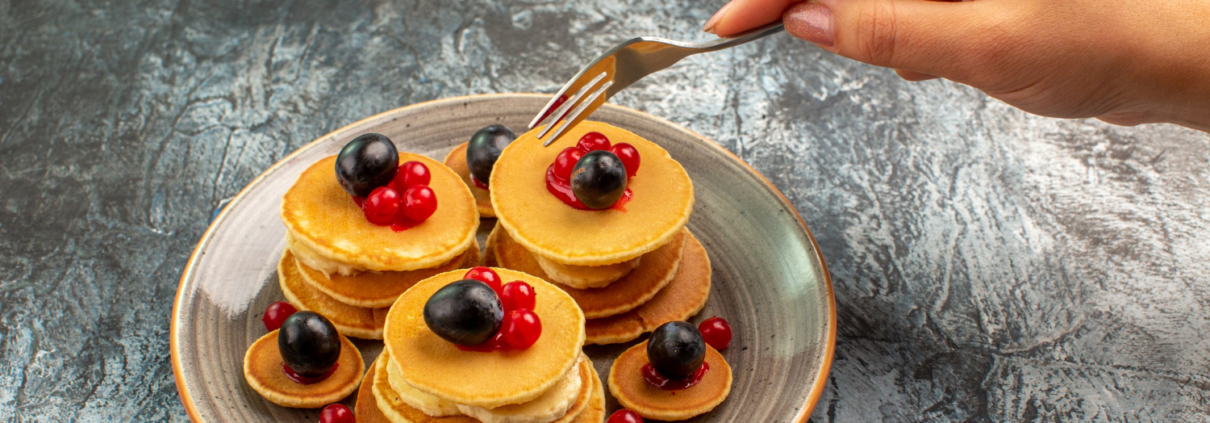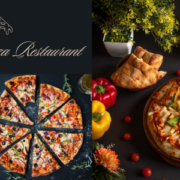How Does a Pancake Mix Maintain Consistency?
In professional kitchens, consistency is a defining factor in quality. Whether serving breakfast in hotels, creating dessert menus in fine-dining establishments, or managing high-volume breakfast operations, achieving uniform texture, flavor, and appearance is non-negotiable. A key tool in delivering this consistency is pancake mix. Far from a simple convenience, it is a scientifically balanced ingredient system designed to standardize results while streamlining operations.
This article explores how pancake mixes contribute to predictable outcomes, the science behind their formulation, and why they are indispensable in professional culinary environments.
The Science of Pancake Mix
Pancake mix is formulated to provide a precise balance of ingredients that ensures each batch of batter behaves predictably. Unlike assembling pancakes from scratch, which requires careful measurement and timing, a professionally prepared mix includes:
- Flour: The backbone of structure, where protein content determines gluten formation, affecting texture and elasticity.
- Leavening agents: Typically, baking powder or a combination of baking powder and baking soda, these provide a consistent rise and light interiors.
- Sugar: Enhances flavor, aids in browning through the Maillard reaction, and helps retain moisture.
- Fats or oils: Promote tenderness, improve batter spread, and create a golden exterior.
- Stabilizers or emulsifiers: Ensure smooth, lump-free batter, facilitate even mixing, and extend shelf life.
The meticulous formulation of these components allows pancake mixes to provide predictable batter behavior, which is crucial for professional kitchens that rely on precision and efficiency.
Consistency in Texture
Texture is a critical aspect of professional-quality pancakes. Ideal pancakes should have a soft, airy interior while maintaining a slight crispness on the exterior. Pancake mixes ensure this balance by:
- Standardizing gluten development produces a stable structure that holds air pockets created during cooking.
- Incorporating emulsifiers and fats that retain moisture without making the batter dense or soggy.
- Ensuring uniform leavening, so each pancake rises evenly and maintains an open, tender crumb.
By using a pre-formulated mix, kitchens can avoid variability in texture that often occurs when batter is prepared manually, ensuring that every plate meets the same high standard.
Flavor Uniformity
Professional kitchens also demand consistency in flavor. Pancake mixes are designed to deliver a predictable taste profile:
- Sugar levels are carefully balanced to achieve sweetness without overpowering the natural flavors of the flour or other added ingredients.
- Leavening and pH balance are controlled to prevent bitterness or off-flavors.
- The mix provides a neutral base that allows chefs to incorporate flavorings such as vanilla, spices, or cocoa while maintaining structural integrity.
This ensures that every pancake tastes exactly as intended, critical for operations serving multiple guests or producing large quantities simultaneously.
Operational Efficiency and Time Management
One of the most significant advantages of using pancake mixes in professional kitchens is operational efficiency. Preparing batter from scratch can be time-consuming and error-prone, particularly during high-volume service. Pancake mixes:
- Reduce preparation time by eliminating the need to measure multiple ingredients accurately.
- Ensure batch-to-batch consistency, even when production volume fluctuates.
- Minimize human error, which is especially beneficial when training new staff or managing busy shifts.
By streamlining the preparation process, kitchens can maintain quality while improving workflow and service speed.
Interaction with Cooking Conditions
Even with a perfect batter, cooking conditions play a role in the outcome. Pancake mixes are formulated to interact predictably with temperature and heat:
- Browning: Controlled sugar and protein content promote even Maillard reactions, resulting in golden-brown surfaces.
- Moisture retention: Balanced fat and starch ratios prevent drying out, ensuring a tender bite.
- Rise control: Consistent leavening allows pancakes to puff evenly without collapsing or producing dense centers.
This predictability is particularly valuable in professional kitchens where griddle temperatures may vary slightly across equipment or during continuous production.
Flexibility for Menu Innovation
While pancake mixes provide a standardized base, they are highly adaptable for creative applications. Chefs can:
- Incorporate mix-ins such as chocolate chips, berries, or nuts without compromising structure.
- Substitute liquids like milk, buttermilk, or plant-based alternatives to adjust flavor and richness.
- Add spices, extracts, or citrus zest to align with seasonal menus or specialty offerings.
This versatility allows professionals to innovate while preserving operational efficiency and consistent quality.
Conclusion
Consistency in professional kitchens is essential, and every element of a recipe contributes to achieving it. Pancake mix provides a scientifically balanced foundation that guarantees uniform texture, flavor, and appearance. It reduces preparation time, minimizes error, and supports operational efficiency, all while allowing room for menu creativity.
For professional operations, the use of high-quality pancake mixes ensures that every batch delivers the same expected results, meeting exacting standards for taste, texture, and presentation. By integrating them into the workflow, chefs can focus on perfecting cooking techniques and flavor innovation, confident that the base ingredient will perform flawlessly every time.
FAQs
Q1: How does pancake mix ensure a consistent texture?
By standardizing gluten development, leavening, and moisture retention, it produces pancakes with tender interiors and slight exterior crispness.
Q2: Can pancake mix maintain flavor consistency?
Yes, balanced sugar and ingredient ratios ensure uniform taste across batches.
Q3: How does pancake mix improve operational efficiency?
It reduces preparation time, minimizes measurement errors, and ensures predictable results in high-volume kitchens.
Q4: Can chefs customize pancakes using the mix?
Yes, mix-ins, alternative liquids, and flavorings can be added without affecting structure or cooking performance.
Q5: Does pancake mix help with inventory and shelf life?
Yes, stabilized mixes extend shelf life, reduce waste, and simplify kitchen inventory management.










Leave a Reply
Want to join the discussion?Feel free to contribute!